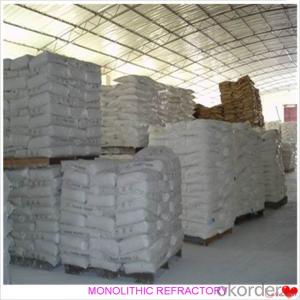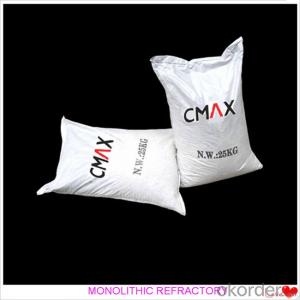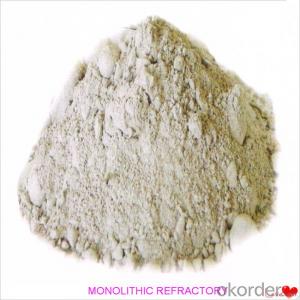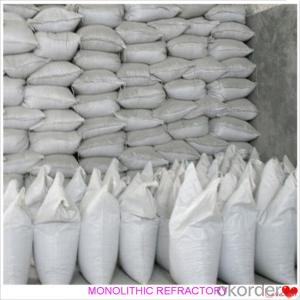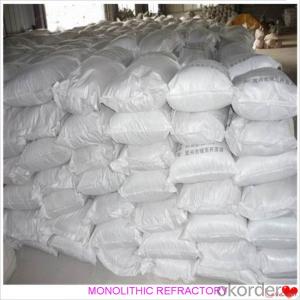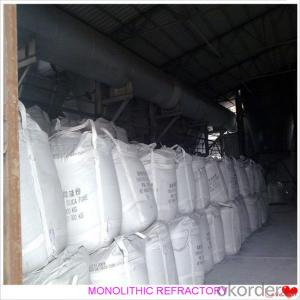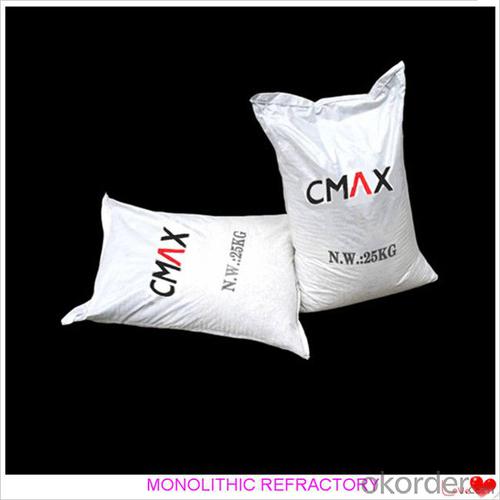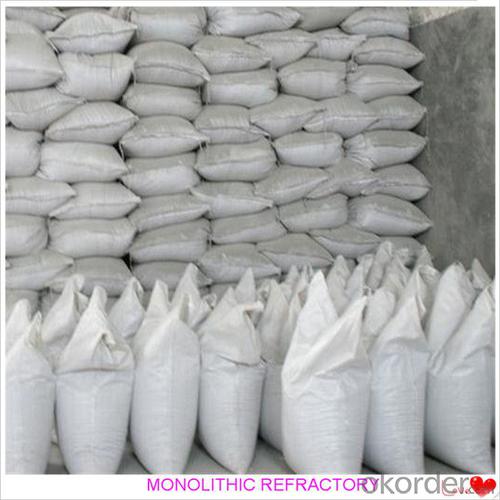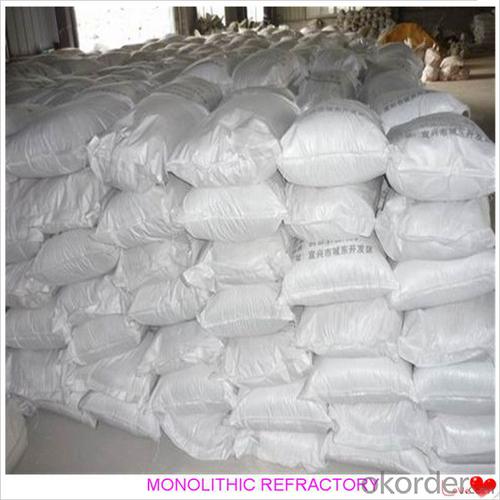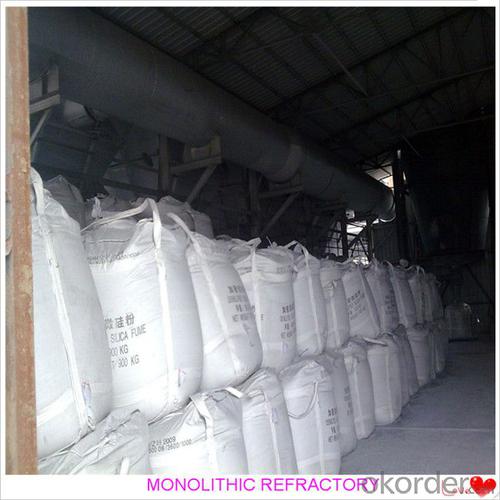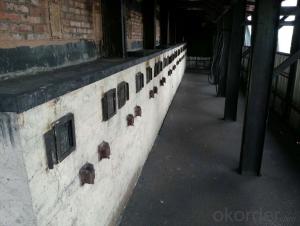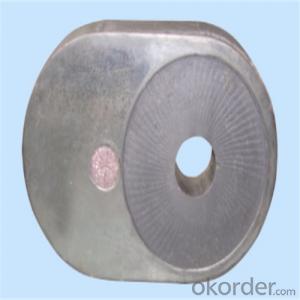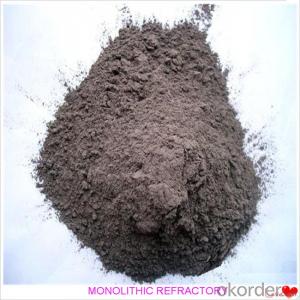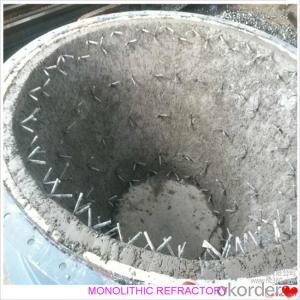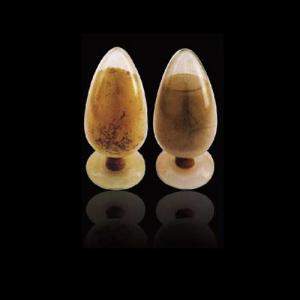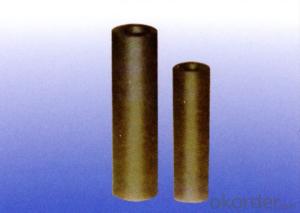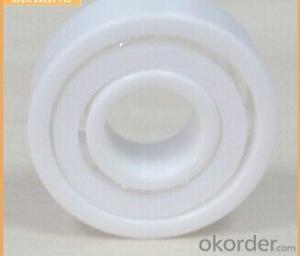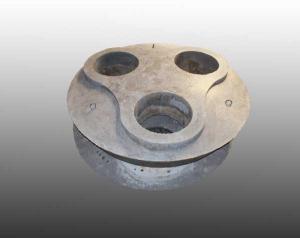Monolithic Refractories for Iron and Steel Industry - High Alumina Castable for Fireside and Industrial Furnace
- Loading Port:
- China main port
- Payment Terms:
- TT OR LC
- Min Order Qty:
- 1000 kg
- Supply Capability:
- 3000000 kg/month
OKorder Service Pledge
OKorder Financial Service
You Might Also Like
High Alumina Castable For Fireplace and Industrial Furnace in Iron and Steel
Product Description:
High alumina castable is manufactured according to international standards. The product is famous for its excellent abrasion resistance and low thermal conductivity. Further, these can be provided in different specifications as required by the clients. The High alumina castables are used high purity raw materials and additives as the main material, and made of under superfine powder adding technology.
Product Advantages:
The material has excellent structural stability and air tightness, and has high physical and chemical properties, also has a fine working ability.They should be used with the same material products.
Product Applications:
For feature of High alumina castable, they have excellent abrasion resistance, thermal shock resistance, high-temperature resistance, anti-corrode and have high intensity.
Designed for refractory lining of blast furnace iron and slag runners, skimmers and soon
They can be used in troughs of small and mid size BFs and in all positions of the troughs where fast tapping is required.
Product Specifications:
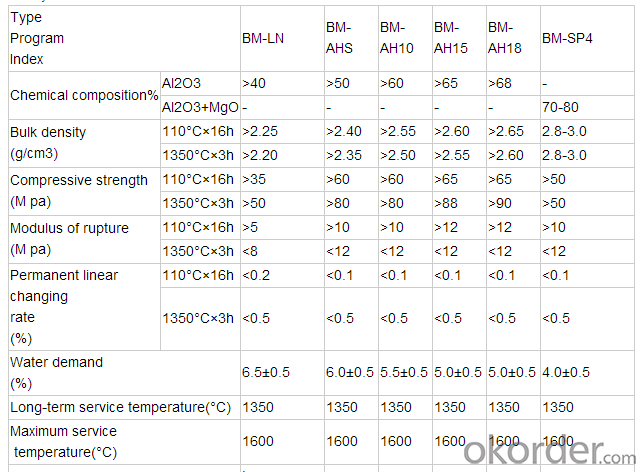
FAQ:
1. How you can control your quality?
For each production processing, we have complete QC system for the chemical composition
and Physical properties. After production, all the goods will be tested, and the quality certificate
will be shipped along with goods.
2. What's your delivery time?
It usually needs about 20days- 45 days after receiving the deposit.
3. Do you provide free samples?
Yes, we can provide a free sample for testing, If we have sample in stock,
The quantity based on the material type, The buyer should bear all the shipping costs.
4. What's your payment terms?
We can accept 30% deposit, 70% balance before shipment for ordrs over $ 2000.
5. Can we visit your Company?
Yes, certainly. You are very welcome to China and we will be honored to have a customer and friend.
Product Picture:
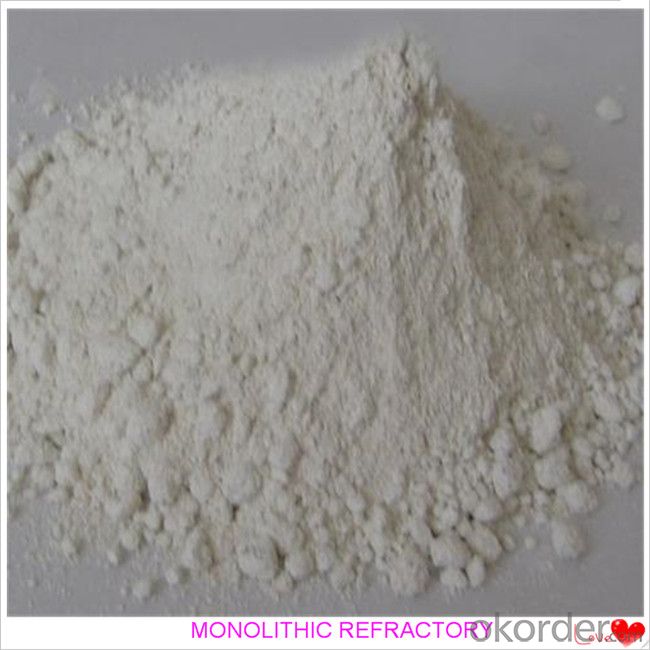
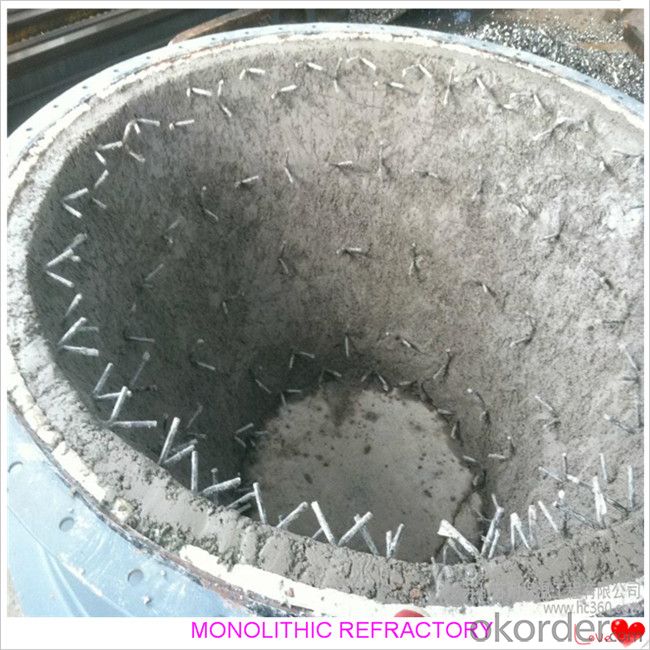
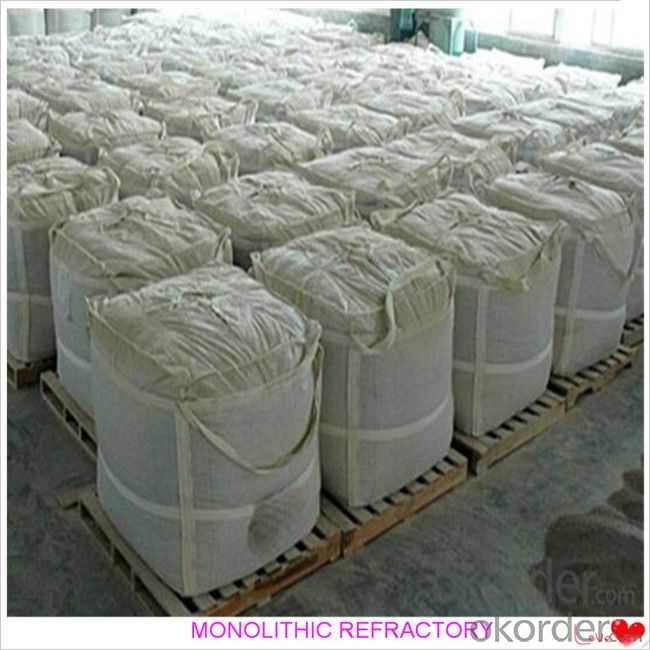
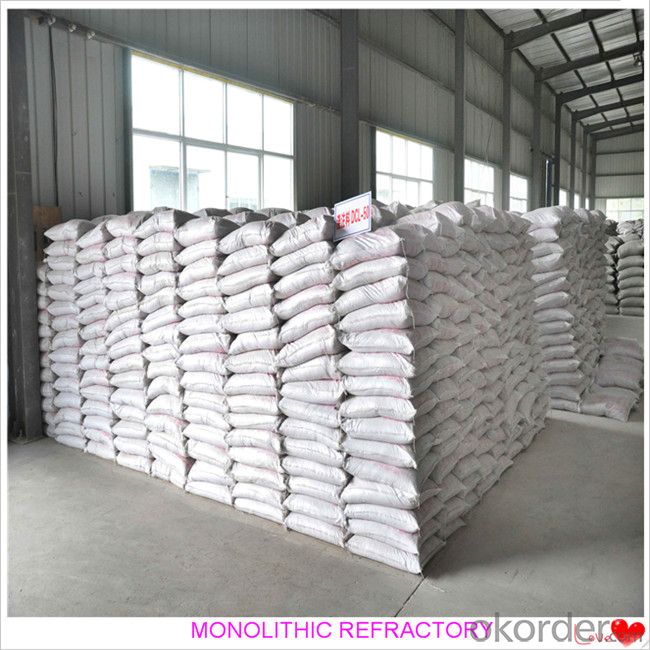
- Q: How does the composition of monolithic refractories impact their performance?
- The composition of monolithic refractories plays a crucial role in determining their performance. Monolithic refractories are essentially unshaped refractory materials that are used to line furnaces, kilns, and other high-temperature equipment. They are preferred over traditional brick and mortar refractories due to their ease of installation and ability to conform to complex shapes. The composition of monolithic refractories includes various components such as aggregates, binders, and additives. The type and proportion of these constituents significantly influence the physical, mechanical, and thermal properties of the refractory material. Aggregates are the major component of monolithic refractories and provide the structural integrity. They can be made of various materials like alumina, silica, magnesia, and carbon. Each aggregate has its own unique properties that determine the refractory's resistance to heat, chemical attack, and mechanical stress. For example, alumina aggregates offer excellent resistance to high temperatures and chemical corrosion, while carbon-based aggregates are preferred for their high thermal conductivity. Binders are added to the mix to provide cohesion and improve the refractory's strength. Common binders include clay, calcium aluminate cement, and colloidal silica. The selection of binders depends on the desired strength, workability, and setting time of the refractory material. Additives are incorporated in the composition to enhance specific properties. They can improve the refractory's resistance to thermal shock, abrasion, or chemical attack. Additives like zirconium oxide, silicon carbide, and graphite are often used to enhance the performance of monolithic refractories in specific applications. The proper combination and proportion of these constituents are crucial for achieving the desired performance of monolithic refractories. The composition affects the refractory's thermal conductivity, thermal expansion, density, porosity, and chemical resistance. For instance, a higher alumina content would improve the refractory's resistance to high temperatures and chemical corrosion, while a higher silica content would enhance its insulating properties. In conclusion, the composition of monolithic refractories has a significant impact on their performance. The selection of aggregates, binders, and additives must be carefully considered to achieve the desired properties and ensure optimal performance in specific high-temperature applications.
- Q: How do monolithic refractories contribute to the reduction of heat loss in iron and steel furnaces?
- Monolithic refractories play a crucial role in reducing heat loss in iron and steel furnaces by providing excellent insulation and maintaining a high level of thermal efficiency. These materials are designed to withstand extreme temperatures and are applied as a single, seamless lining, eliminating joints and gaps that could allow heat to escape. By creating a barrier between the hot furnace and the surrounding environment, monolithic refractories effectively minimize heat loss, ensuring optimal energy utilization and cost savings in the iron and steel industry.
- Q: How do monolithic refractories contribute to the reduction of heat loss in iron and steel plants?
- Monolithic refractories play a crucial role in reducing heat loss in iron and steel plants due to their unique properties and application methods. These refractories are composed of single, continuous materials with no joints or seams, allowing for excellent thermal insulation and minimizing heat transfer. One way monolithic refractories contribute to heat loss reduction is through their low thermal conductivity. These materials have a high resistance to heat flow, which means they can effectively prevent the loss of thermal energy from the walls and linings of furnaces, ladles, and other equipment used in iron and steel production. By providing a barrier between the hot interior and the cooler surroundings, monolithic refractories minimize heat escape and maintain a more stable and efficient thermal environment. Additionally, monolithic refractories are known for their excellent adhesion and high strength, which enables them to form a tight seal and eliminate gaps or cracks in the lining of the equipment. This prevents the ingress of cold air or the escape of hot gases, further reducing heat loss and ensuring the desired operating temperatures are maintained. Furthermore, monolithic refractories can be easily applied and repaired, allowing for a more efficient and cost-effective maintenance process. Regular inspections and repairs can be carried out to address any wear or damage to the refractory lining, ensuring its optimal performance and minimizing heat loss over time. In summary, monolithic refractories contribute to the reduction of heat loss in iron and steel plants through their low thermal conductivity, excellent adhesion, and high strength. By effectively insulating the equipment and preventing heat escape, these refractories contribute to a more energy-efficient and productive operation in the iron and steel industry.
- Q: What are the key properties of monolithic refractories?
- The key properties of monolithic refractories include high strength, thermal shock resistance, erosion and abrasion resistance, good thermal conductivity, and excellent chemical resistance. These properties make monolithic refractories suitable for applications where high temperatures, harsh environments, and mechanical stresses are present, such as in furnaces, kilns, and reactors.
- Q: How can the lifespan of monolithic refractories be extended?
- There are several measures that can be taken to extend the lifespan of monolithic refractories. To begin with, it is essential to ensure their proper installation. This involves following the guidelines provided by the manufacturer, using appropriate equipment and techniques, and ensuring correct curing and drying processes. By installing them correctly, the monolithic refractories become better equipped to withstand thermal stresses and chemical attacks, thus prolonging their lifespan. Regular maintenance is also crucial in extending the lifespan of monolithic refractories. This includes conducting routine inspections to identify any signs of wear, erosion, or cracking. Timely repairs or replacements should be carried out to prevent further damage. Moreover, applying protective coatings or sealants can help reduce erosion and chemical attacks, thereby enhancing the refractories' longevity. Another important aspect is implementing effective operating practices. This involves maintaining optimal operating conditions, such as controlling temperature fluctuations, to minimize thermal shocks and reduce the risk of spalling or cracking. Proper material selection is also key, as using refractories specifically designed for the intended application can increase their resistance to chemical attacks and extend their lifespan. Furthermore, ensuring proper handling and storage of monolithic refractories is essential. They should be stored in a dry, clean environment, away from moisture and extreme temperatures, to prevent premature degradation. Careful handling should be exercised, avoiding excessive impact or rough treatment that could cause damage. Lastly, it is beneficial to seek guidance from experienced professionals or consult refractory suppliers. Their expertise can provide valuable insights and guidance on best practices for extending the lifespan of monolithic refractories. By making informed decisions regarding installation, maintenance, and operating practices, the refractories' lifespan can be maximized and their performance optimized.
- Q: How do monolithic refractories perform in reheating furnace roof applications?
- Monolithic refractories perform exceptionally well in reheating furnace roof applications due to their superior thermal shock resistance, high strength, and excellent resistance to chemical attack at high temperatures. These refractories provide a reliable and durable lining that can withstand the extreme conditions of reheating furnaces, ensuring efficient heat transfer, reduced maintenance, and prolonged furnace life.
- Q: How are monolithic refractories manufactured?
- Monolithic refractories are manufactured by combining various raw materials, such as aggregates, binders, and additives, with water to create a workable mixture. This mixture is then shaped into the desired form, either by casting, gunning, or ramming. Afterwards, the shaped refractory is dried and fired at high temperatures to achieve the desired strength and thermal properties. The manufacturing process of monolithic refractories allows for flexibility in design and installation, making them suitable for a wide range of applications.
- Q: What are the specific requirements of monolithic refractories for continuous casting applications?
- The specific requirements of monolithic refractories for continuous casting applications are designed to withstand the extreme temperatures and thermal shock conditions experienced during the continuous casting process. Firstly, these refractories must have high thermal conductivity to effectively transfer heat away from the molten metal and maintain a stable casting temperature. This helps to prevent the formation of defects such as cracks, hot spots, and uneven solidification in the cast product. Secondly, monolithic refractories for continuous casting applications must have high refractoriness, meaning they can withstand the high temperatures of the molten metal without melting or deforming. This ensures the refractories can provide a protective lining and maintain their structural integrity throughout the casting process. Additionally, these refractories must have excellent resistance to thermal shock. The continuous casting process involves rapid cooling and heating cycles, which can create significant temperature differentials and induce thermal stresses. Monolithic refractories with low thermal expansion and high thermal shock resistance can withstand these conditions without cracking or spalling. Furthermore, good erosion and corrosion resistance are crucial requirements for monolithic refractories in continuous casting applications. The molten metal and slag can be highly corrosive and abrasive, leading to wear and chemical attack on the refractory lining. Hence, refractories with high resistance to erosion and corrosion are essential to ensure the longevity and stability of the lining. Lastly, monolithic refractories for continuous casting applications should have good workability and ease of installation. This allows for efficient and precise lining installation, reducing downtime during maintenance or repairs. Overall, the specific requirements of monolithic refractories for continuous casting applications include high thermal conductivity, refractoriness, thermal shock resistance, erosion and corrosion resistance, as well as good workability. Meeting these requirements ensures the refractories can effectively protect the casting equipment and maintain the quality of the cast products.
- Q: How do monolithic refractories improve the efficiency of ladle and tundish drying furnaces?
- Monolithic refractories improve the efficiency of ladle and tundish drying furnaces by providing excellent thermal insulation, high resistance to thermal shock, and superior strength. These properties ensure minimal heat loss during the drying process, allowing for faster and more efficient heating. Additionally, monolithic refractories offer better resistance to erosion and corrosion, prolonging the lifespan of the furnaces and reducing maintenance requirements. Overall, the use of monolithic refractories enhances the performance and productivity of ladle and tundish drying furnaces.
- Q: How do monolithic refractories contribute to the control of spalling in iron and steel processes?
- In controlling spalling in iron and steel processes, monolithic refractories play a vital role. Spalling, which is the breaking or flaking off of refractory material due to thermal stress, mechanical stress, or chemical reactions, can cause severe damage to furnace or kiln linings, decreasing efficiency and productivity. To tackle this issue, monolithic refractories are specifically designed to be more resistant to spalling compared to traditional brick or tile refractories. They consist of a single, uniform material that can withstand high temperatures and thermal shock, making them less prone to cracking or breaking in extreme conditions. The ability of monolithic refractories to control spalling in iron and steel processes primarily stems from their high thermal conductivity and low thermal expansion properties. These characteristics allow them to effectively distribute and absorb the intense heat generated during melting or heat treatment processes, reducing thermal stress on the refractory lining. Moreover, monolithic refractories offer improved resistance to chemical reactions and erosion caused by molten metal, slag, or gases present in iron and steel processes. They are formulated with additives and binders that enhance chemical stability and corrosion protection, minimizing the risk of spalling due to chemical attack. Furthermore, the monolithic nature of these refractories eliminates the need for joints or seams, common weak points in traditional brick or tile refractories. This seamless design ensures a more uniform and durable lining, reducing the likelihood of spalling occurring at these vulnerable areas. Overall, monolithic refractories significantly contribute to spalling control in iron and steel processes by providing superior thermal conductivity, low thermal expansion, chemical resistance, and a seamless lining. This helps maintain the integrity of the refractory lining, prolonging its lifespan and ensuring efficient and safe operation of furnaces or kilns.
Send your message to us
Monolithic Refractories for Iron and Steel Industry - High Alumina Castable for Fireside and Industrial Furnace
- Loading Port:
- China main port
- Payment Terms:
- TT OR LC
- Min Order Qty:
- 1000 kg
- Supply Capability:
- 3000000 kg/month
OKorder Service Pledge
OKorder Financial Service
Similar products
Hot products
Hot Searches
Related keywords
